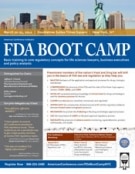Well, I’ve certainly heard from a number of people regarding my earlier post on the compulsory license granted by the Controller-General of Patents, Designs and Trade Marks to Natco Pharma for manufacture of Bayer’s drug Sorafenib Tosylate (Nexavar), a drug used to treat liver and kidney cancer.
The gist of the complaints are that I’m a/an [insert expletive] for not caring about Indian citizens who cannot afford to pay for the drugs. Despite the fact that when you dig yourself into a hole it’s best to stop digging, I will try to say a tiny bit more.
Let me just say that despite how things tend to come out when they go from my head to written form, I do get it. The average annual income in India is around US$8,000, according to 2011/2012 salary survey. That doesn’t leave a lot of money for paying for cancer medications. In India, Bayer Corp. markets sorefinib as Nexavar for about $5,600 a month under a patent in force until 2021.
My problem with the decision is that it comes across as having a pre-determined outcome and then a reasoning was crafted around the desired outcome.
Here’s what the Patent Court said:
1. The reasonable requirements of the public not being met. Basically, the court said that only 2% of the total number of kidney and liver cancer patients were able to access the drug. But, Bayer offered to offer more patient assistance in a program where a patient would buy one month of drug and get it free for the remaining 3 months. However, the Controller rejected this outright saying:
“In the present proceedings, we are not concerned with philanthropy, which no doubt is appreciable. Such actions cannot be construed as steps to work the invention on a commercial scale to an adequate extent.”
Huh? The Controller wouldn’t let Bayer expand availability and then said it wasn’t making the drug available. Also, is it only Bayer’s responsibility?
2. The Controller found that the price of the drug was not “reasonably affordable” to the public. Despite all that was written, the Controller said this was the real issue at hand:
“It stands to common logic that a patented article like the drug in this case was not brought by the public due to only one reason, i.e. its price was not reasonably affordable to them.”
As I tried to say in the original post, this is all about money.
3. The Controller found that the importation of Bayer’s drug into India did not amount to “working” the patent in India and held that ‘worked in the territory of India’ means manufactured to a reasonable extent in India. But almost 90% of all pharmaceutical patents are also only imported into India.
So, where does that leave me? I’m an ardent supporter of providing access to drugs to those in need. I’m not a blind supporter of unlimited profits by drug companies. I’m also not foolish enough to believe that we can provide all level of care to all persons on the planet.
What makes me feel uneasy is that only the patent holder is deemed to be responsible for providing access to care. A situation where only 2% of the total number of kidney and liver cancer patients were able to access the drug is appalling. But, where did anyone step up and offer to provide better access? Where did anyone offer payment assistance (other than Bayer, which was rejected)?
Don’t get me wrong, I agree that big pharma needs to be kept in balance and unlimited profits can’t further society either. All I’m asking is why isn’t there a broader discussion on how to share the burden of medical care costs?
Ed.
A good review of the decision and many thought-provoking comments are available at Spicy IP here: Breaking News: India’s First Compulsory License Granted!






